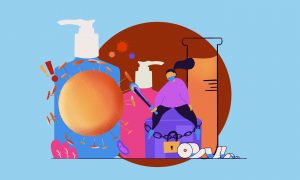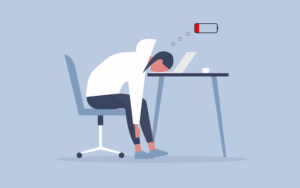This piece appears as part of our On The Pandemic column, featuring commentary about the COVID-19 pandemic from a diverse set of voices.
Content warning: violence, abuse, sexual assault.
Stay home. For most of us, it’s the one thing we can do to save lives from the reach of COVID-19—to do our part for society when so many others are risking their lives by going to work for us.
For some, however, staying home is more dangerous than contracting the disease.
Due to this pandemic, as well as the financial strain many families are facing, domestic violence cases have spiked nationally. Though hotline calls initially dropped as victims were unable to ask for help while their abusers were in the house, they have increased again in recent weeks. Legal proceedings are being delayed, and victims’ concerns for sanctuary are magnified as the outside world, particularly shelters, are ripe for infection. The proximity to abusers, as well as the fact that more people are purchasing guns, means that victims of intimate partner violence are more at risk of losing their lives than ever before.
Yet it is important to note that, while domestic violence is intensifying, it was an under-looked problem even before COVID-19 hit.
During the summer after my freshman year, I interned at the Asian/Pacific Islander Domestic Violence Resource Project (A/PI DVRP), a nonprofit that provides services for victims of sexual assault and domestic violence in the DMV’s Asian community. My time there not only educated me, but also allowed me the opportunity to directly help those who are suffering. My experience transformed the sterile statistics of victims into something infinitely more personal and urgent. As domestic violence cases increase during this pandemic, understanding why it is such a problem in the United States and advocating for meaningful social change are all the more essential.
More than 10 million Americans face domestic violence every year. Domestic abuse can take different forms, with physical violence being particularly common. But it is important to be aware of all types of domestic abuse: psychological, economic, documentation, and sexual abuse are forms of manipulation that are just as serious as any physical scar.
Some communities are particularly vulnerable to domestic violence, including LGBTQ+, lower-income, and immigrant identities. My time at the nonprofit showed me the risks Asians face in particular: language barriers, cultural stigma associated with victim-blaming, the prevalence of arranged marriages, limited access to mental health services, and the reluctance to divorce. Many of these barriers stem from the prioritization of the family among Asian cultures: a common pressure to maintain the ideal of a perfect two-parent household can mean that victims of abuse are collateral. These vulnerabilities resonate particularly as I consider my own Asian identity and the ways that my culture could be putting women at risk.
Someone’s inability to speak English should not prohibit them from finding safety. Someone’s immigration status should not determine whether or not they have to stay with an abuser. Being aware of these added obstacles, doing what we can to ameliorate them by supporting access to translators, and aiding nonprofits focused on these cultural identities are important for anyone advocating for domestic violence prevention.
Of course, while some of these problems are specific to certain identities, it’s important to remember that domestic violence can happen to anyone, anywhere. Men, for example, also face domestic violence at significant rates, and often also encounter a stigma associated with norms of masculinity, prohibiting them from seeking help or even recognizing DV.
These male voices should be amplified while also demonstrating the gendered structural and cultural conditions that especially suppress women. Nearly 1 in 5 women in the United States has been raped. Yet we live in a society that is reluctant to believe survivors, a reluctance that only facilitates domestic violence. Our culture incentivizes male aggression in sports and combat, which can lead to aggression in relationships being given a normal, “just boys being boys” label. We live in a culture where married people can be isolated or economically dependent on their partners, making it easier for abusive people to control every part of their partners’ lives without the risk of other loved ones finding out. And of course, this dependence is only exacerbated in isolation during this pandemic.
The multifaceted, complicated nature of domestic violence reveals why expecting DV victims to “just leave” is a problematic and unhelpful tool. Often, victims must take more subtle steps to get away from their abusers, as they face chances of the situation escalating if angered abusers follow them. If victims have children, they may fear abusers using them as leverage. But even if victims are finally able to take that step to “leave,” there are often minimal alternatives for safety, shelter, and economic stability.
Being aware of this cultural context provides a basis for engaging with the issue in a meaningful way. “Toxic masculinity” and “Believe survivors” aren’t just buzz words—they’re key components of this conversation that need to be addressed to save lives. By expanding popular discourse, we can eradicate the stigma of abusive, coercive behavior being a “private affair.” We can stop minimizing this phenomenon. We can stop acting like it is something rare when it actually has societal roots. The first step to solving any problem is talking about it, and that is why encouraging more mediums for this awareness is so important.
Luckily, talking about domestic violence is gaining prevalence in the media, though we have a long way to go. Acclaimed TV show Big Little Lies shattered the illusion that domestic abusers are easily identifiable when the seemingly perfect Perry turned out to be an abuser. Going past the stereotype—watching out for warning signs of abuse and knowing that it is something that can happen even to those we think we know everything about—is how the rest of us can do our own part, especially because the usual reporters like therapists, teachers, and doctors can no longer do so in this quarantined world.
Awareness is the first step in prevention, but there is so much healing to be done after the fact. DVRP championed healing through art. Whether that was painting events that could help people process their trauma or a graphic novel picturing victims’ stories, art found a way into the rebuilding. A single brushstroke or a written word isn’t enough to fix this issue, but emphasizing the humanity behind this problem is how we can keep ourselves from being desensitized to it.
My internship allowed me to see firsthand what domestic violence looks like for people. Victims who call can be so young. Friends can be kind and supportive enough to call on the behalf of others. Those who face intimate partner violence must become extremely resilient as they regain their lives and face even more hurdles. Looking out for others and contributing meaningfully to the discourse, even if we can only do so through a Zoom call or written work, is the least we can do for these people.
This problem is also not one that we can distance ourselves from. There are many students at Georgetown who could be facing an unsafe situation while home, and intimate partner violence is an issue even while on-campus. There is only so much that the average person can do, but the way that we support survivors brings us closer to becoming the society that we want to be.
Rachel Snyder writes in No Visible Bruises: What We Don’t Know About Domestic Violence Can Kill Us, “So often when reporters write about issues, we are covering stories of the living, speaking to change makers, policy makers, who are alive and well. But in domestic violence, I suspect for many of us it is often the dead with whom we really commune.” When we finally rise up from this pandemic, when we remember those who have died from the disease itself and those who have suffered from the economic repercussions, we cannot forget those who had to wage their own battle behind closed doors during this epidemic. We cannot forget those who we were unable to help, those who should have been part of a conversation that many Americans are loath to have. We have failed so many in the past—but that means it is even more important to strive to help those that we still can.
Stay home to save others from disease. Speak up from home to save others from domestic violence.
—
If you are interested in providing funds to support victims, DVRP is a wonderful resource.
If you or someone you know are in an unsafe situation, the National Domestic Violence Hotline, Health Education Services at Georgetown, or a local provider may be able to help. Advocates are working to help clients digitally, so even if you cannot call, options like texting may be available.
Image Credit: Deborah Han





